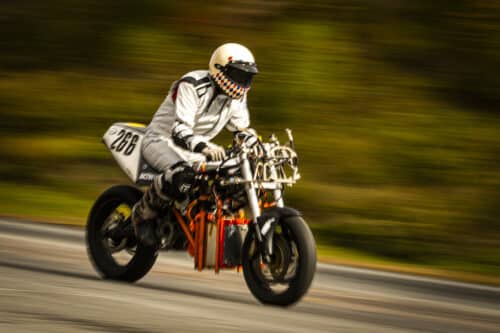The project introduces a hydrogen-powered motorcycle, using open-source technology to provide an alternative in transportation, aiming for eco-friendly travel and future mobility solutions.

MIT’s Electric Vehicle Team has developed a project that uses a fuel cell system and is a testbed for hydrogen-based transportation. In October, the motorcycle demonstrated its capabilities on a whole test track. It’s uniquely designed as an open-source platform, allowing for the swapping and testing of various components. Additionally, the team plans to make their designs freely available online, enabling others to experiment with their versions of this cutting-edge technology.
The team acknowledges the environmental benefits of battery-powered cars but also recognizes their limitations in range and concerns related to lithium mining and emissions. Consequently, they are exploring hydrogen-powered vehicles as a viable, clean alternative. This approach offers the convenience of quick refuelling, akin to traditional gasoline-powered cars.
The team initially tested their prototype on a dynamometer, which simulates road conditions. During its development phase, the vehicle was powered by a battery, pending the arrival and installation of a fuel cell supplied by the South Korean company Doosan.
Initially, the team used a commercially available electric motor for their prototype, but they are now developing a custom-designed version for greater flexibility. The team is also creating a comprehensive guide detailing their journey in designing and building the hydrogen-electric fuel-cell bike. This type of motorcycle, still rare in commercial markets, is mainly in the prototype stage.
The team aims to make their bike an open-source platform for research and education, allowing others to test ideas in constrained environments. Unlike commercially designed vehicles, this bike is made for research, with easily swappable components for real-world testing of new designs.
The team’s motorcycle is unique as it is fully open-source, thoroughly documented, and rigorously tested, setting a new standard for such vehicles. The process has been challenging, involving a 1999 motorcycle frame and several custom-made parts to accommodate the motor, hydrogen tank, fuel cell, and drivetrain. Space constraints have required innovative mounting solutions.
The team is optimistic about hydrogen’s potential as a clean alternative to fossil fuels and stresses the importance of demonstration projects to advance hydrogen energy and demonstrate its efficacy.








